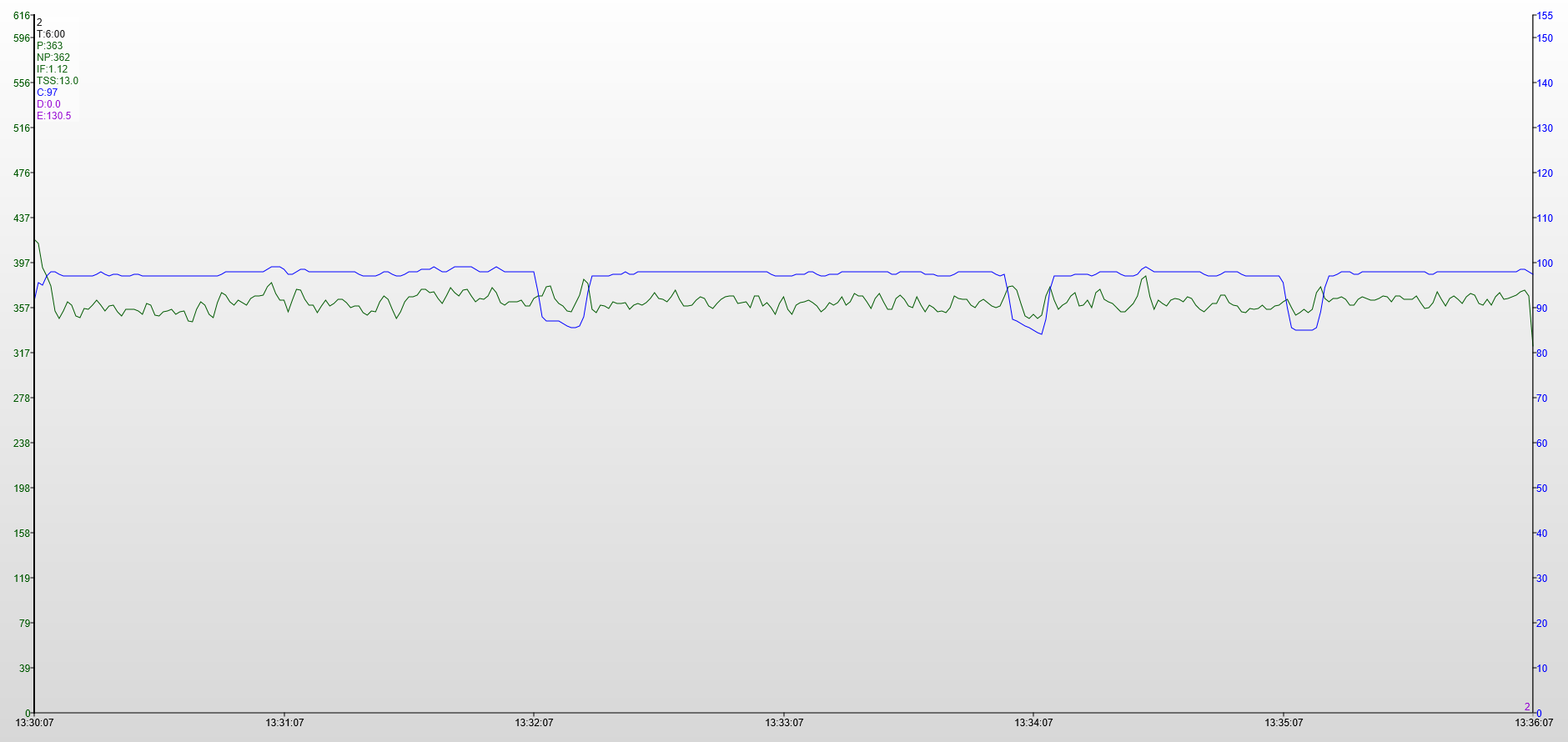VO2max describes the maximum amount of oxygen which the body can consume during maximal exercise. It can be measured in a lab or quite accurately estimated with a VO2max Calculator
VO2max is trainable, although there are people who say that VO2max is not or hardly trainable. It is done by training sessions with the correct intensity. A big part of VO2max is genetically determined. Someone with a VO2max of 30 ml / (kg ⋅ min) will never be a world class athlete with more than 80 ml / (kg ⋅ min). A study with athletes with a VO2max of around 70 ml / (kg ⋅ min) - these are already quite high level athletes - show an average increase of VO2max of 8.7 % and 2.6 % for the two tested groups. The first group performed short intervals with higher intensity and a short recovery phase (intermittend). The second group performed longer intervals with a longer recovery period. VO2max gain is not the only factor to look at when choosing the right intervals. Years of training (experienced athletes probably can gain more by performing shorter intervals) and the specific target of the athlete. The study also shows that despite a larger increase in VO2max for the first group the efficiency of the second group got better.
VO2max training is usually performed with interval training. There are many possible intervals to train it. Two very popular interval sessions are short ones (i.e. 3 sets with 10 x 30 s / 30 s - thus 30 s with a high intensity, around zone 6 and 30 s with a lower intensity in the endurance zone) and long ones (i.e. 5 x 6 min / 5 min - thus 6 min with an intensity in zone 5 and 5 min of really easy pedalling in zone 1). To vary a bit and increase the stimulus for training the recovery period can be shortened. A shortened recovery period causes a more fatigued start into the next intervals which results in a shorter time to reach the actual VO2max level. This increases time near VO2max.
Hard training requires focus on recovery - both active and passive. It is important to be well recovered before such a hard training session. Furthermore health status should be good when aiming for a VO2max session. In case of discomfort during the session it is better to stop it. Of course these sessions are really hard and therefore there will be a "normal" discomfort. Experienced athletes sometimes do VO2max sessions several days in a row but this not only is exhausting physically but also mentally. It is important that the power is at least near the target, otherwise fatigue from previous days might be too high already.
A good warm-up is essential before starting the intervals to prepare the body for the upcoming intervals. My warm-up routine usually lasts 20 min with increasing intensity for the first 10 - 15 min and then some short sprints with higher intensity. Also some blocks with high cadence can be included. After the intervals are done a cool down with an intensity in zone 1/2 is important.
One session usually has a short duration, i.e. 20 min warm-up, 40 min intervals and 15 min cool down, which equals to an overall duration of just 1:15 h. Therefore these sessions are suitable for a session on the turbo. During periods of cold temperatures or snow in the winter someone can already work on the shape for the next season, without riding in the freezing cold for hours. Also these sessions are more entertaining, but also really hard, due to the variing intensity.

After the warm up three sets of 10 min with a recovery in zone 1 of 10 min are done.

One set contains 10 x 30 s / 30 s - 30 s on, 30 s off. In this case 30 s with 440 W and 30 s with 220 W.

A good warm up is equally important for the longer interals. These 5 intervals of 6 min each (recovery of 5 min in zone 1) were done at 360 W, which equals to zone 5 for me.

The target is to produce a constant power output throughout the interval.
Leistungstest, Retrieved 09 December 2017
Short intervals induce superior training adaptions compared with long invertals in cyclists , Retrieved 09 December 2017
High-Intensity Interval Duration, Retrieved 09 December 2017